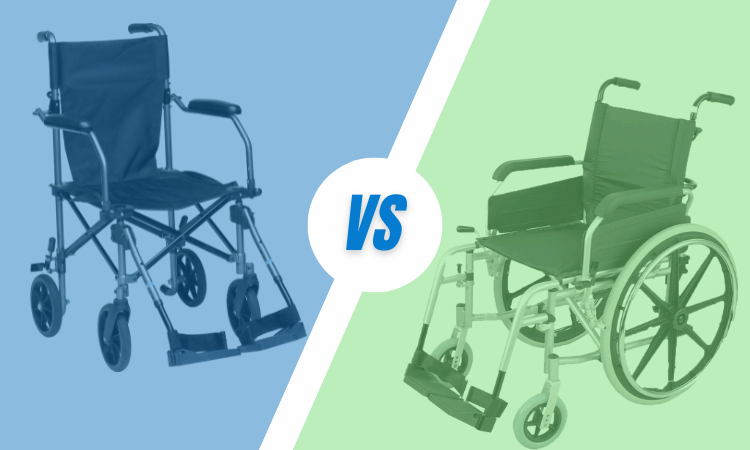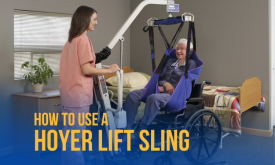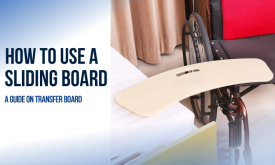For individuals experiencing mobility issues, the ability to move around with freedom or minimal assistance holds significant importance. Reducing the hassle to a greater extent, mobility aids play a crucial role in ensuring this autonomy, offering individuals with different needs the means to explore the world and continue routine life with more freedom.
Among the number of mobility aids available, transport chairs and wheelchairs are indispensable options, each designed to cater to unique requirements. Highlighting the key difference between these mobility aids, here is a detailed insight into what sets the transport chairs and wheelchairs apart. However, to begin with, let’s understand what these mobility aids are along with their functional applications.
What are Transport Chairs?
Transport chairs are typically employed when a person requires assistance with mobility but can still stand or take small steps. Available with different specifications, individuals can get a lightweight transport chair if looking for portable and manageable support or prefer a bariatric transport chair if looking for an aid that supports high weight. The transport chairs are distinguishable from transport wheelchairs because of their smaller wheels and lack of hand rims, making them highly maneuverable by a caregiver or companion.
When and Why are Transport Chairs Used?
The transport chairs are used for transporting individuals with limited mobility from one place to another, for instance, within a hospital or a caregiver’s home.
This mobility aid provides temporary assistance for individuals recovering from injuries or surgeries.
It is ideal for individuals experiencing mobility issues as it supports the upper body strength to participate in a partially upright position.
What are Wheelchairs?
Wheelchairs, the more traditional and widely recognized of the two, are mobility aids that allow users to move around independently by manually propelling themselves using the wheels. The transport wheelchairs come in various designs, including manual wheelchairs and electric wheelchairs.
When and Why are Wheelchairs Used?
Wheelchairs are often chosen when an individual’s mobility is severely limited due to factors like paralysis, amputation, or severe muscle weakness. The wheelchairs are used in several situations like:
Providing long-term mobility solutions for individuals with permanent stabilities.
Assisting those with limited or no ability to stand or walk in maintaining an active lifestyle.
Offering greater independence for individuals who are comfortable self-propelling.
Key difference: Transport Chair Vs. Wheelchairs
While both transport chairs and wheelchairs serve a common goal of providing mobility, both aids differ significantly in terms of functionality, design, and usage. Understanding the key differences is essential when choosing the right mobility aid for a specific situation.
Primary Functionality
Transport chairs are primarily designed for assisted mobility, with caregivers or companions pushing the chair. In contrast, wheelchairs offer self-propulsion, allowing users to move independently.
Wheel Configuration
Transport chairs have four small wheels with no hand rims, making them easy to move. However, the transport chairs are not self-propelled. On the other hand, wheelchairs typically have two large wheels at the rear with hand rims to allow propulsion.
Weight Capacity
Wheelchairs are designed to support a more comprehensive range of weight capacities, making them suitable for a broader spectrum of users. On the other hand, a transport chair has a lower weight limit, given it is a bariatric transport chair.
Portability
The lightweight transport chair is compact and highly portable, designed for easy transport. However, transport wheelchairs are bulkier and less mobile due to the larger size and higher frames.
Independence
Wheelchairs offer greater independence for users who can self-propel. While on the other hand, transport chairs are well suited for those who require assistance with mobility.
Thus, despite the mobility aid serving the same purpose, the critical difference lies in the functionalities. Choosing between these mobility aids requires a thorough understanding of the specific requirements and circumstances of the user. Individuals can enjoy improved mobility, an active lifestyle, and a newfound sense of freedom by making an informed choice.
As a reliable provider of mobility aids, including transport chairs and wheelchairs, Broadway Medical Supply assures of making quality and effective mobility support solutions accessible. Explore the range of options at Broadway Medical Supply catering to personalized needs and rest assured of improved mobility and increased freedom. Whether it is a transport chair for assisted mobility or a wheelchair for self-propulsion, both options significantly enhance the quality of life for those who require them.








